性能测试——压测工具locust——脚本初步简介
locusts脚本,初步简介:





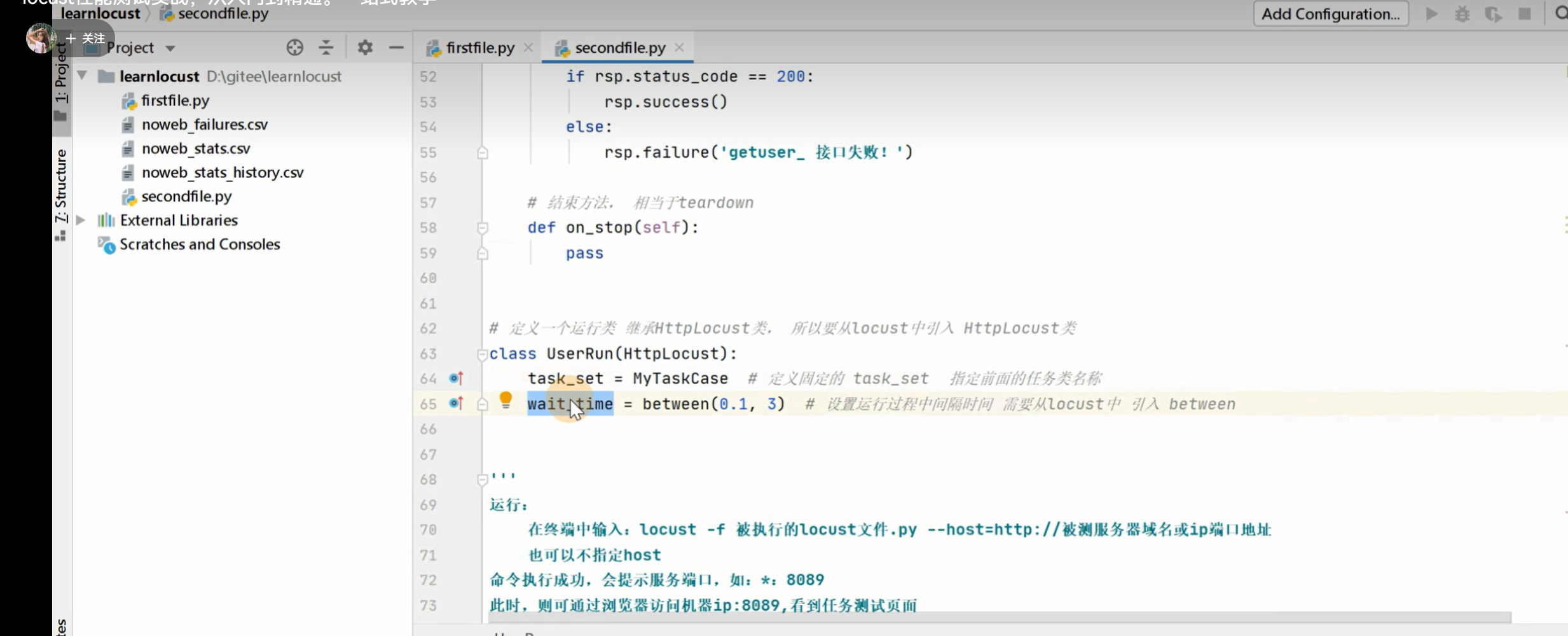
参数:
C:\Users\lenovo>locust --help Usage: locust [OPTIONS] [UserClass ...] Common options: -h, --help show this help message and exit -f LOCUSTFILE, --locustfile LOCUSTFILE Python module to import, e.g. '../other_test.py'. Either a .py file, multiple comma-separated .py files or a package directory. Defaults to 'locustfile'. --config CONFIG Config file path -H HOST, --host HOST Host to load test in the following format: http://10.21.32.33 -u NUM_USERS, --users NUM_USERS Peak number of concurrent Locust users. Primarily used together with --headless or --autostart. Can be changed during a test by keyboard inputs w, W (spawn 1, 10 users) and s, S (stop 1, 10 users) -r SPAWN_RATE, --spawn-rate SPAWN_RATE Rate to spawn users at (users per second). Primarily used together with --headless or --autostart -t RUN_TIME, --run-time RUN_TIME Stop after the specified amount of time, e.g. (300s, 20m, 3h, 1h30m, etc.). Only used together with --headless or --autostart. Defaults to run forever. -l, --list Show list of possible User classes and exit Web UI options: --web-host WEB_HOST Host to bind the web interface to. Defaults to '*' (all interfaces) --web-port WEB_PORT, -P WEB_PORT Port on which to run web host --headless Disable the web interface, and start the test immediately. Use -u and -t to control user count and run time --autostart Starts the test immediately (like --headless, but without disabling the web UI) --autoquit AUTOQUIT Quits Locust entirely, X seconds after the run is finished. Only used together with --autostart. The default is to keep Locust running until you shut it down using CTRL+C --web-auth WEB_AUTH Turn on Basic Auth for the web interface. Should be supplied in the following format: username:password --tls-cert TLS_CERT Optional path to TLS certificate to use to serve over HTTPS --tls-key TLS_KEY Optional path to TLS private key to use to serve over HTTPS --class-picker Enable select boxes in the web interface to choose from all available User classes and Shape classes Master options: Options for running a Locust Master node when running Locust distributed. A Master node need Worker nodes that connect to it before it can run load tests. --master Set locust to run in distributed mode with this process as master --master-bind-host MASTER_BIND_HOST Interfaces (hostname, ip) that locust master should bind to. Only used when running with --master. Defaults to * (all available interfaces). --master-bind-port MASTER_BIND_PORT Port that locust master should bind to. Only used when running with --master. Defaults to 5557. --expect-workers EXPECT_WORKERS How many workers master should expect to connect before starting the test (only when --headless/autostart is used). --expect-workers-max-wait EXPECT_WORKERS_MAX_WAIT How long should the master wait for workers to connect before giving up. Defaults to wait forever Worker options: Options for running a Locust Worker node when running Locust distributed. Only the LOCUSTFILE (-f option) needs to be specified when starting a Worker, since other options such as -u, -r, -t are specified on the Master node. --worker Set locust to run in distributed mode with this process as worker --master-host MASTER_NODE_HOST Host or IP address of locust master for distributed load testing. Only used when running with --worker. Defaults to 127.0.0.1. --master-port MASTER_NODE_PORT The port to connect to that is used by the locust master for distributed load testing. Only used when running with --worker. Defaults to 5557. Tag options: Locust tasks can be tagged using the @tag decorator. These options let specify which tasks to include or exclude during a test. -T [TAG [TAG ...]], --tags [TAG [TAG ...]] List of tags to include in the test, so only tasks with any matching tags will be executed -E [TAG [TAG ...]], --exclude-tags [TAG [TAG ...]] List of tags to exclude from the test, so only tasks with no matching tags will be executed Request statistics options: --csv CSV_PREFIX Store current request stats to files in CSV format. Setting this option will generate three files: [CSV_PREFIX]_stats.csv, [CSV_PREFIX]_stats_history.csv and [CSV_PREFIX]_failures.csv --csv-full-history Store each stats entry in CSV format to _stats_history.csv file. You must also specify the '-- csv' argument to enable this. --print-stats Enable periodic printing of request stats in UI runs --only-summary Disable periodic printing of request stats during --headless run --reset-stats Reset statistics once spawning has been completed. Should be set on both master and workers when running in distributed mode --html HTML_FILE Store HTML report to file path specified --json Prints the final stats in JSON format to stdout. Useful for parsing the results in other programs/scripts. Use together with --headless and --skip-log for an output only with the json data. Logging options: --skip-log-setup Disable Locust's logging setup. Instead, the configuration is provided by the Locust test or Python defaults. --loglevel LOGLEVEL, -L LOGLEVEL Choose between DEBUG/INFO/WARNING/ERROR/CRITICAL. Default is INFO. --logfile LOGFILE Path to log file. If not set, log will go to stderr Other options: --show-task-ratio Print table of the User classes' task execution ratio. Use this with non-zero --user option if some classes define non-zero fixed_count attribute. --show-task-ratio-json Print json data of the User classes' task execution ratio. Use this with non-zero --user option if some classes define non-zero fixed_count attribute. --version, -V Show program's version number and exit --exit-code-on-error EXIT_CODE_ON_ERROR Sets the process exit code to use when a test result contain any failure or error -s STOP_TIMEOUT, --stop-timeout STOP_TIMEOUT Number of seconds to wait for a simulated user to complete any executing task before exiting. Default is to terminate immediately. This parameter only needs to be specified for the master process when running Locust distributed. --equal-weights Use equally distributed task weights, overriding the weights specified in the locustfile. --enable-rebalancing Allow to automatically rebalance users if new workers are added or removed during a test run. User classes: UserClass Optionally specify which User classes that should be used (available User classes can be listed with -l or --list). LOCUST_USER_CLASSES environment variable can also be used to specify User classes






图像界面运行模式:









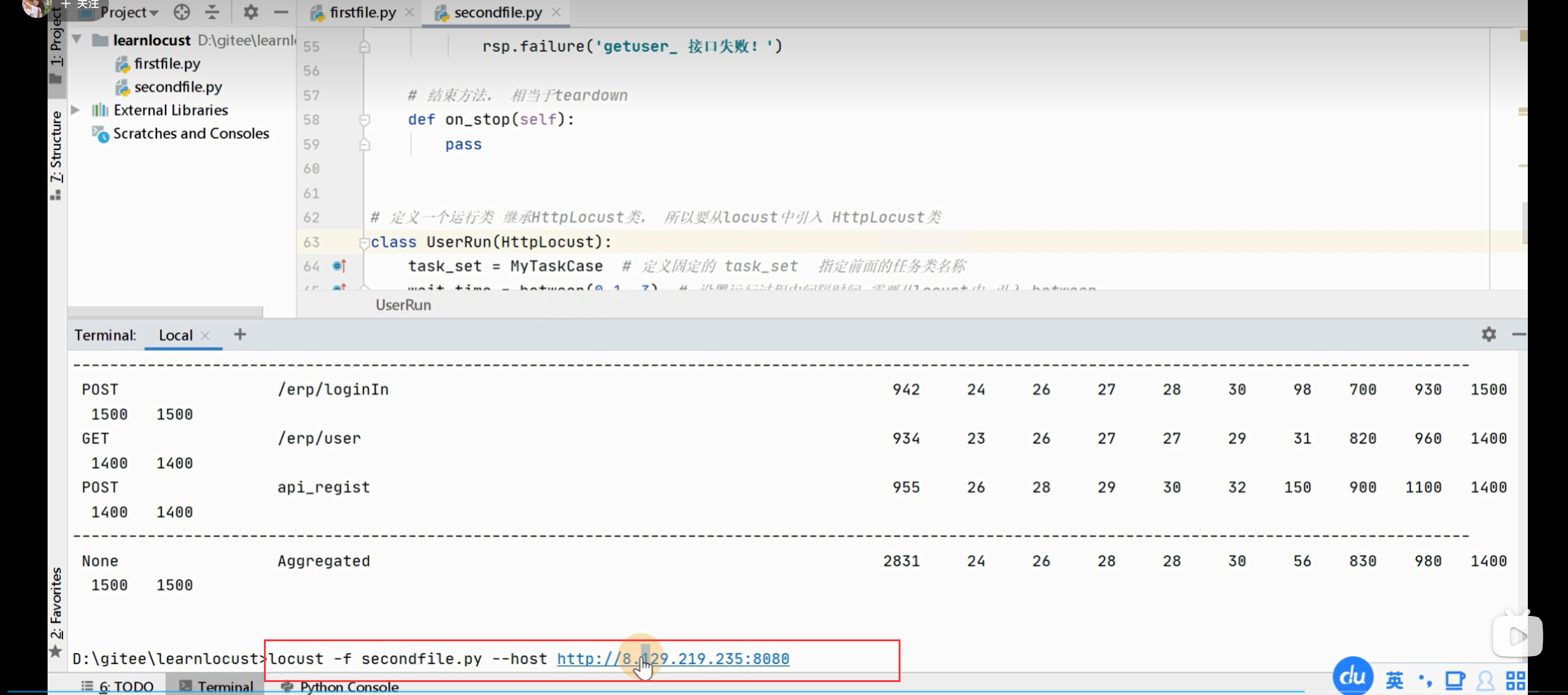
无界面&分布式:






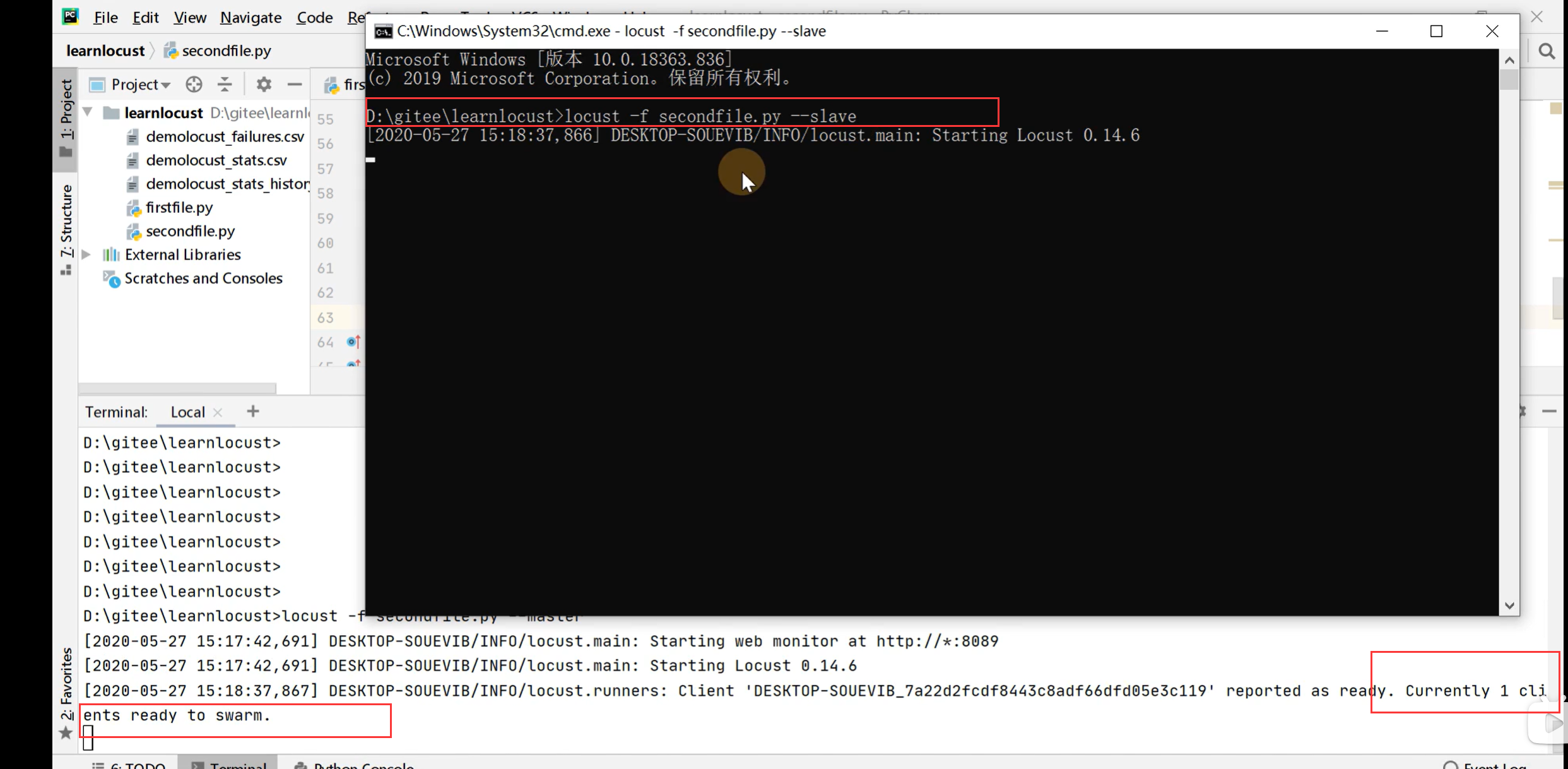


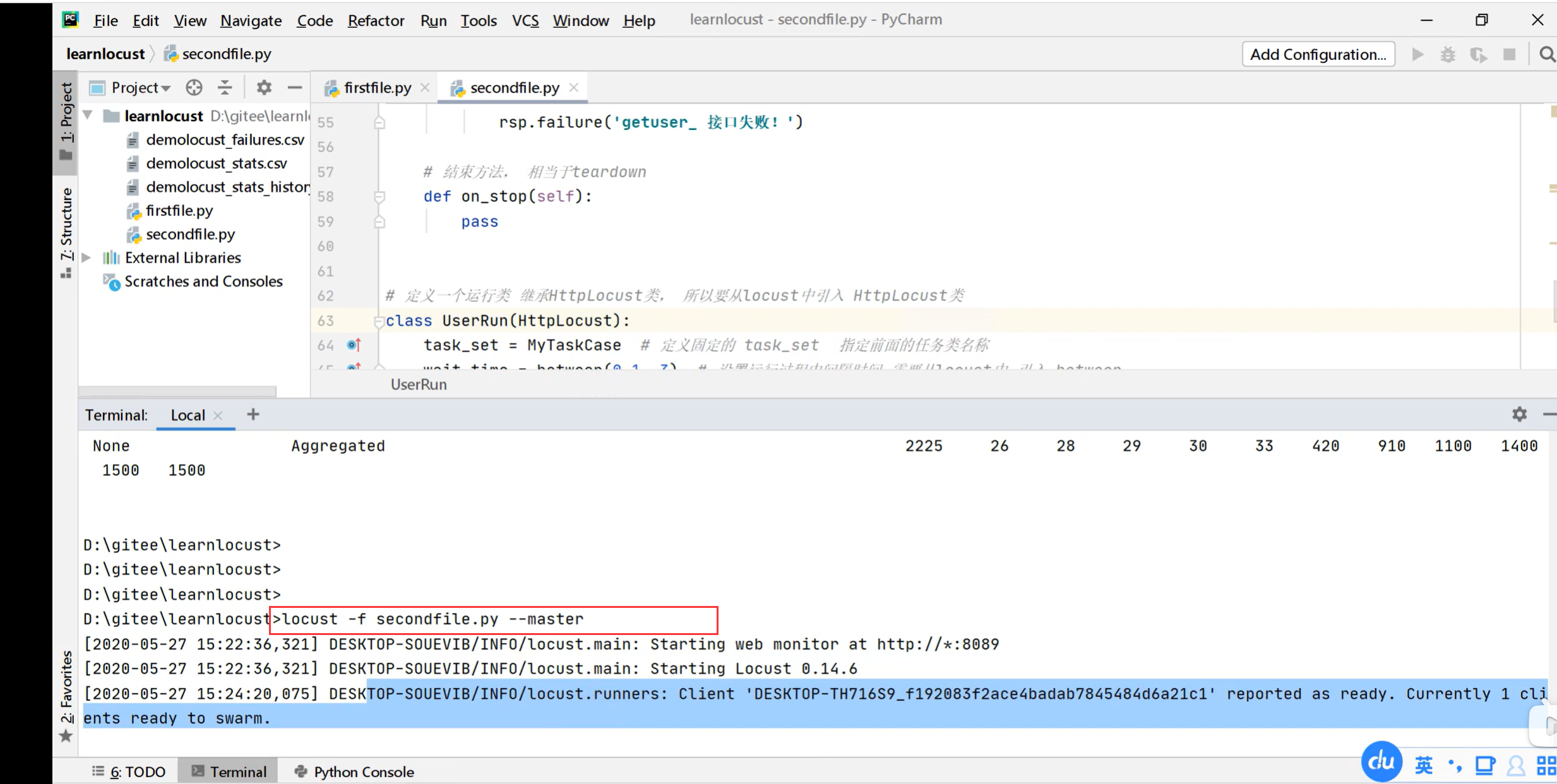
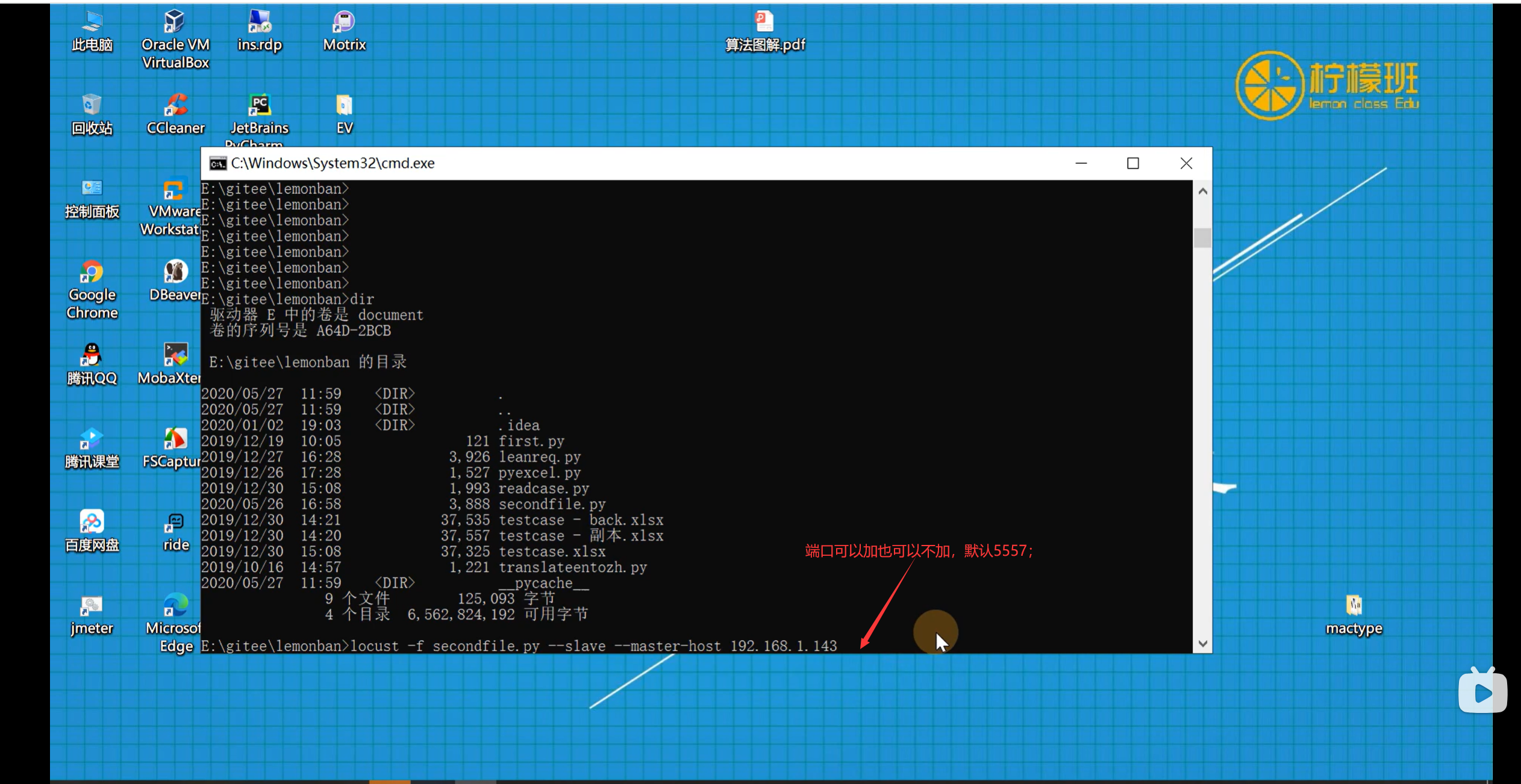


参考:https://www.bilibili.com/video/BV1s24y1R7Zb?p=1&vd_source=79bbd5b76bfd74c2ef1501653cee29d6




